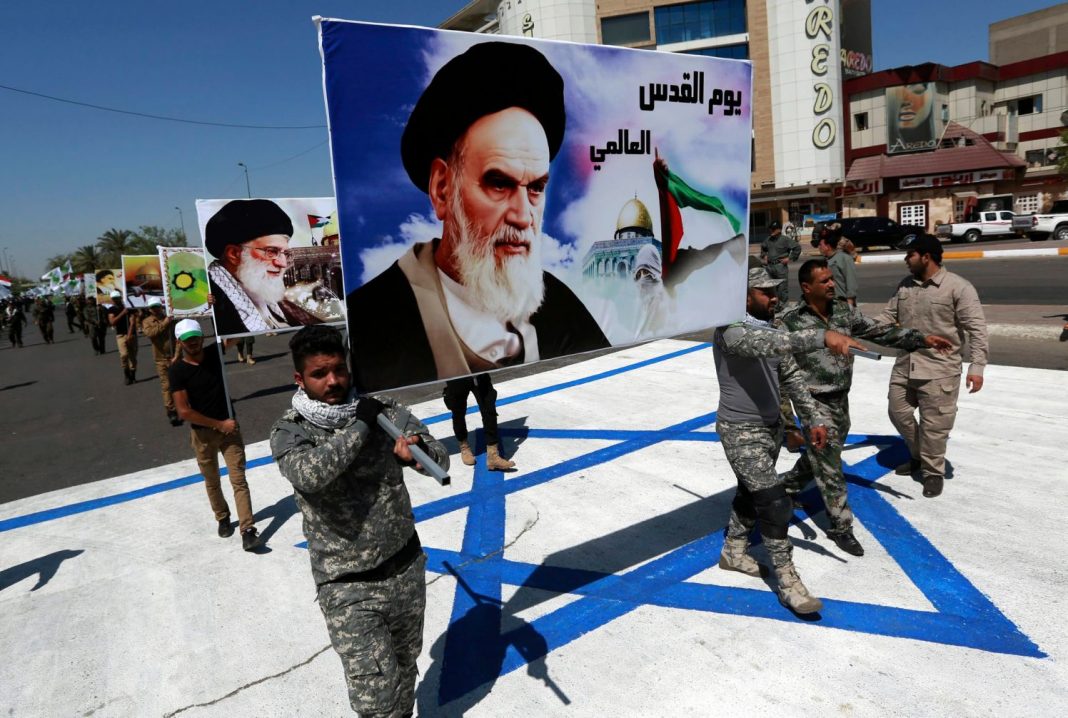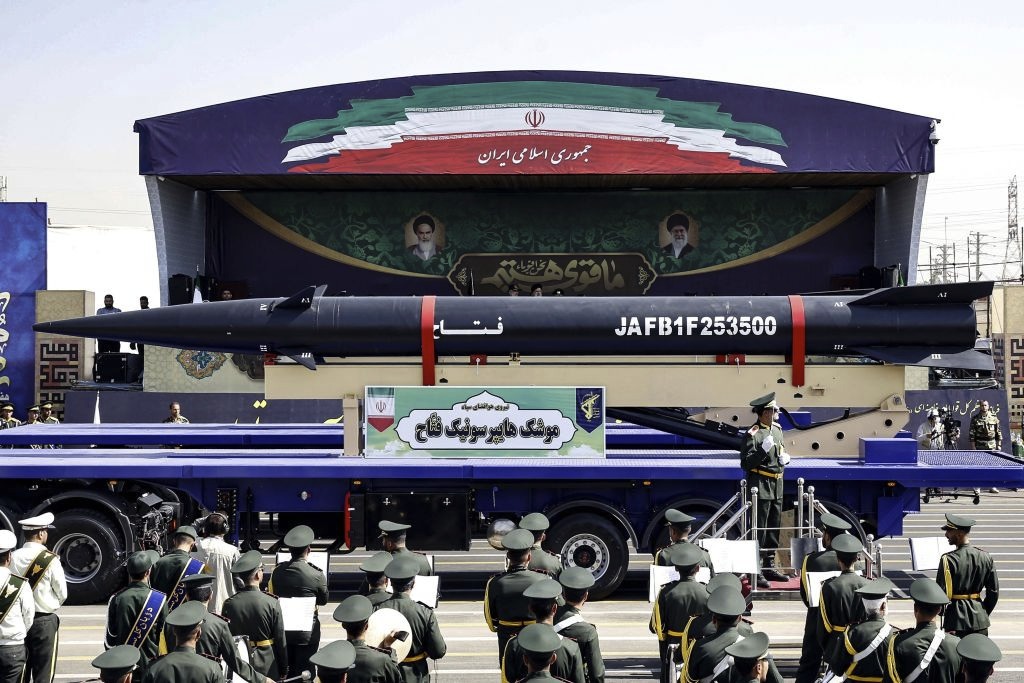Opinion/Hamas Is a Distraction. It’s Hezbollah and Iran Who Can Rain Down Unprecedented Destruction on Israel
شاك فيريلش من الهآررتس: حماس للإلهاء أما الخطر فهو من حزب الله وإيران وفي قدرتهما على تدمير غير مسبوق لإسرائيل
Chuck Freilich/Haaretz/August 30/18
If Israel had true leaders, they’d be telling the Israeli public to calm down about Gaza and the limited threat Hamas poses, and focusing on the exponentially more serious threat of Hezbollah and Iran
At a time when most people around the world are enjoying the lazy, lethargic closing days of late summer, Israel is facing Hamas’ never-ending threats. Hamas, however, is a distraction from the real threat – Hezbollah, and the growing Iranian presence in Syria. Israel has the upper hand in the conflict with Hamas in Gaza, but the threat from Hezbollah and Iran are of a different magnitude.
Hamas threatens Israel in four primary ways. The first, its cross-border tunnels, designed to target Israel’s civilian home front, has already been largely thwarted by the underground barrier Israel is building, and should be essentially neutralized when the barrier is completed next year.
The second threat, Hamas’ attempts to cross the border fence under the rubric of “marches of return,” has also largely been thwarted – at a price to Israel’s international standing – by fire against “nonviolent demonstrators,” many of whom happen to be Hamas fighters.
The danger is twofold: that the ongoing but limited conflict will ultimately lead to a major confrontation, or that Hamas may finally learn what nonviolent conflict really means
If 100,000 truly nonviolent Gazans (or East Jerusalemites, or West Bank residents), armed solely with flowers, were to storm the border fence between Gaza and Israel, or the West Bank separation fence or checkpoints, Israel would face a serious problem.
Shooting nonviolent protestors en masse is clearly unacceptable. In the meantime, the Palestinians’ seemingly inexhaustible well of hatred, and never-ending ability to choose the wrong options, has saved us from this dilemma.
Astonishingly, the third threat, of burning kites, has managed to drive the Israeli public and political arena crazy for months. To be sure, these simple kites, whose level of sophistication brings us back to the dawn of humanity, can kill. One kite landed in an Israeli nursery school while the children were playing outside, and only by a miracle was a catastrophe averted.
Nevertheless, not a single person has been hurt to date by “kite terrorism” and the fires they cause have been blown out of proportion. Most of the damage has been to agricultural fields, which are rapidly plowed under and thus the damage is no longer visible.
Despite all our empathy for the farmers and the other Israelis whose homes border Gaza, a policy of restraint is infinitely preferable to a large-scale military operation, which would not change much of significance. The financial cost of the kites’ damage is equivalent to only a few hours of warfare, and that’s before mentioning the cost in lives.
The fourth threat, Hamas rockets, has also essentially been neutralized at the national level by Israel’s rocket defense systems, and is thus limited today primarily to the Gaza border communities.
This is certainly not satisfactory, even “unacceptable” – a term that should be banned from the Hebrew language, since every possible “unacceptable threat” has happened and we have learned to live with them – and mortars, as opposed to rockets, remain a significant problem.
Nevertheless, communities in Israel’s north and south lived under far more severe threats for decades. Unfortunately, this has been the price of our national sovereignty for 70 years, and some proportion is warranted.
A future conflict with Hezbollah and Iran will be an entirely different story.
Israel’s civilian home front and military rear are likely to suffer unprecedented destruction. The IDF continues to adhere to an offensive strategy and ethos, but the debatably good old days, when our forces could sally forth, conquer territory and achieve decisive victory, are apparently gone forever. The last thing that Israel needs today is to conquer additional populated territory, and without conquering territory it is almost impossible to achieve decisive victory.
For these and other reasons, the IDF does not yet have an effective offensive response to the Hezbollah rocket threat, even though we have been facing it for decades, except at the price of an all-out war and heavy casualties. As long as the price of the “solution” is worse than the danger posed by the threat, Israel’s governments will prefer a different route.
Given these circumstances, Israel has been forced to adopt an increasingly defensive and diplomatic response. By way of example, Israel has deployed various rocket defense systems such as Iron Dome, built border fences on all fronts, is now constructing additional defensive obstacles on the northern and Gazan borders, and is building “virtual defenses” against cyber threats.
Israel’s defensive response is already significantly better than it used to be, but the problem is cost, especially the number of batteries and especially missiles required for missile and rocket defense. At the levels currently planned for deployment, the IDF will have to give priority to defending vital military installations and civilian infrastructure, such as airbases and power plants, over population centers, in order to ensure its ability to continue fighting in a major future conflict with Hezbollah. The public will remain partially exposed and vulnerable.
While Hamas was busy launching kites, a constructive new trial balloon, unfortunately rare in our national skies, was recently launched, calling for the allocation of an additional 30 billion shekels for defense, including a national rocket and missile shield. Encouragingly, the initiative appears to have survived initial coalition sparring and attempts to shoot it down and may actually become official policy.
Such a defensive shield need not be completely hermetic, but should be able to achieve two primary objectives: First, it should eliminate the need to prioritize the defense of vital military installations and civilian infrastructure over population centers. Second, it should neutralize the Hezbollah rocket threat, in the sense that the home front can continue functioning during wartime at a level similar to that achieved during the last round of hostilities against Hamas in 2014.
Such a shield would cost an estimated $7-10 billion. The U.S. has committed to funding $5 billion for rocket and missile defense over the next decade – for the Iron Dome, David’s Sling and Arrow systems – and Israel should ask the Trump administration to “frontload” it even at the expense of other needs. Israel can cover the rest.
Diplomacy has long gotten a bad rap in Israel, but it is critically important today vis-a-vis Israel’s main adversaries – Hamas, Hezbollah and Iran – especially when wedded to a coherent military strategy. Diplomatic efforts with Egypt (and indirectly with Hamas), for example, may prove to be the best means of achieving long term quiet along the Gaza border.
Israel can continue beating the Palestinians militarily for decades, but there is no military solution to the conflict with them. Russian diplomacy is probably the best means of limiting the Iranian presence in Syria.
It may be hard to see, but Hamas is actually in dire straits in the face of Israel’s overwhelming military superiority. We are rapidly neutralizing their military capabilities and depriving them of the ability to cause us significant harm.
The economy and infrastructure in Gaza are in shambles, and their isolation in the international arena and among Arab states is deepening. The Palestinian Authority is hostile to Hamas and pressuring it, and the public in Gaza is showing signs of growing despair over their plight and leadership.
If Israel had a national leadership worthy of the name, the message to the people on Hamas would be clear. Instead of playing on public fears, they’d be saying: keep calm and cool it.
The conflict with Hamas is certainly not pleasant, but it’s not terrible. If fighting breaks out, Israel will continue to prosper, while Gaza will sink ever deeper into the abyss. A few limited ops, some diplomacy, a bit of patience and steadfastness, and that too shall pass.
Chuck Freilich, a senior fellow at Harvard’s Belfer Center and adjunct professor at Tel Aviv University, is a former Israeli deputy national security adviser. He is also the author of Israeli National Security: A New Strategy for an Era of Change, Oxford University Press, 2018






















